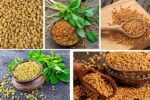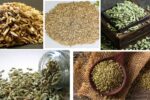Saffron, often referred to as “red gold,” is one of the most precious and expensive spices in the world. Its vivid crimson threads, derived from the Crocus sativus flower, are celebrated for their aromatic fragrance, unique flavor, and medicinal properties. Widely used in culinary dishes, perfumes, and traditional medicines, saffron holds a place of pride in the global spice market. But which country reigns supreme when it comes to saffron production? Let’s explore the leading producer of saffron in the world and delve into the factors that contribute to its dominance.
Iran: The Undisputed Leader in Saffron Production

Global Production Share
Iran is the world’s largest saffron producer, accounting for over 90% of the global saffron supply. This Middle Eastern nation dominates the market with an annual production that exceeds 400 tons, far surpassing other saffron-producing countries such as India, Greece, Afghanistan, and Morocco.
Geographic and Climatic Advantage
Iran’s supremacy in saffron production is largely due to its ideal climatic conditions, particularly in the provinces of Khorasan Razavi and South Khorasan. The region’s semi-arid climate, characterized by cold winters and hot, dry summers, is perfectly suited for saffron cultivation. The soil in these areas is also well-drained and rich in organic matter, providing optimal conditions for the Crocus sativus flower to thrive.
Why Iran Excels in Saffron Cultivation

1. Centuries-Old Tradition
Saffron cultivation in Iran dates back more than 3,000 years. The knowledge of planting, harvesting, and drying saffron threads has been passed down through generations. Farmers in Iran have honed traditional methods that preserve the quality of the spice, ensuring that Iranian saffron consistently ranks as some of the finest in the world.
2. Skilled Labor Force
Harvesting saffron is a labor-intensive process. Each flower produces only three delicate red stigmas, which must be handpicked at dawn before the sun causes them to wilt. It takes about 150,000 flowers to produce just 1 kilogram of saffron. Iran’s farmers, particularly women, have mastered this meticulous art, ensuring a steady and quality-driven saffron supply.
3. Government and Private Sector Support
Iran has invested in research centers, agricultural training programs, and cooperative societies to enhance saffron production. There’s also a growing push toward value-added saffron products, such as saffron-based cosmetics, pharmaceuticals, and teas, to diversify revenue and reduce reliance on raw exports.
Economic Impact of Saffron in Iran

A Major Export Commodity
Saffron is one of Iran’s most valuable non-oil exports. The spice is exported to over 50 countries, including Spain, India, the United Arab Emirates, China, and the United States. Despite its dominance, a large volume of Iranian saffron is re-exported from countries like Spain after rebranding, often making the origin less visible in global markets.
Employment and Livelihood
The saffron industry provides employment to more than 200,000 people in Iran, many of whom are women and smallholder farmers. The crop offers a high-income potential compared to other agricultural products, especially in arid regions where alternatives are limited.
Other Major Saffron Producers

While Iran is the global leader, other countries are also noteworthy producers of saffron:
1. India
India, particularly the Kashmir region, is known for producing high-quality saffron with a distinct aroma and deep red color. Although its total output (around 10-15 tons annually) is much smaller than Iran’s, Kashmiri saffron holds Geographical Indication (GI) tag status, which helps protect its unique identity.
2. Afghanistan
Afghanistan has made significant strides in saffron production over the last decade. Supported by international development programs, Afghan saffron is now exported to Europe and the Middle East. Herat province is the hub of Afghan saffron cultivation, producing roughly 15-20 tons annually.
3. Spain
Spain is both a producer and re-exporter of saffron. The La Mancha region is famous for its saffron, which also holds a GI tag. Spanish saffron is known for strict quality control, though the country imports large volumes of Iranian saffron for packaging and resale.
4. Greece and Morocco
These countries produce smaller quantities of saffron but maintain a presence in the European market. Greek saffron from Kozani and Moroccan saffron from Taliouine are celebrated for their purity and traditional cultivation methods.
Challenges in the Saffron Industry

1. Climate Change
Rising temperatures, water scarcity, and erratic weather patterns pose a threat to saffron-producing regions, especially in arid climates like Iran and Afghanistan.
2. Price Volatility
Saffron prices are highly volatile and influenced by international demand, trade sanctions (particularly against Iran), and market manipulation.
3. Adulteration and Quality Control
Due to its high value, saffron is often subject to adulteration—mixing genuine saffron with colored fibers or using chemical dyes. This not only affects consumer trust but also damages the reputation of producers.
Sustainable Future for Saffron
To ensure a sustainable future for the saffron industry, especially in the leading producer country, efforts are being made in the following areas:
- Organic farming practices to reduce chemical inputs.
- Technological interventions, such as precision irrigation and greenhouse cultivation.
- International branding and traceability systems to build consumer confidence and add value to the product.
Iran is also exploring climate-resilient saffron varieties and strengthening export channels despite trade barriers, which could help maintain its leadership in the global saffron market.
Conclusion
Iran holds the prestigious title of being the largest saffron producer in the world, a position backed by ideal agro-climatic conditions, centuries of traditional knowledge, and a skilled labor force. While countries like India, Afghanistan, and Spain also contribute to the saffron market, none rival Iran in terms of sheer volume and heritage.
As global demand for saffron continues to rise—thanks to its culinary and medicinal value—Iran’s continued dominance will depend on its ability to adapt to modern agricultural practices, ensure product quality, and expand its global footprint in value-added saffron products.
Saffron’s journey from the purple crocus flower to the world’s kitchens is a testament to human patience, tradition, and the enduring allure of nature’s most luxurious spice.






Leave A Comment